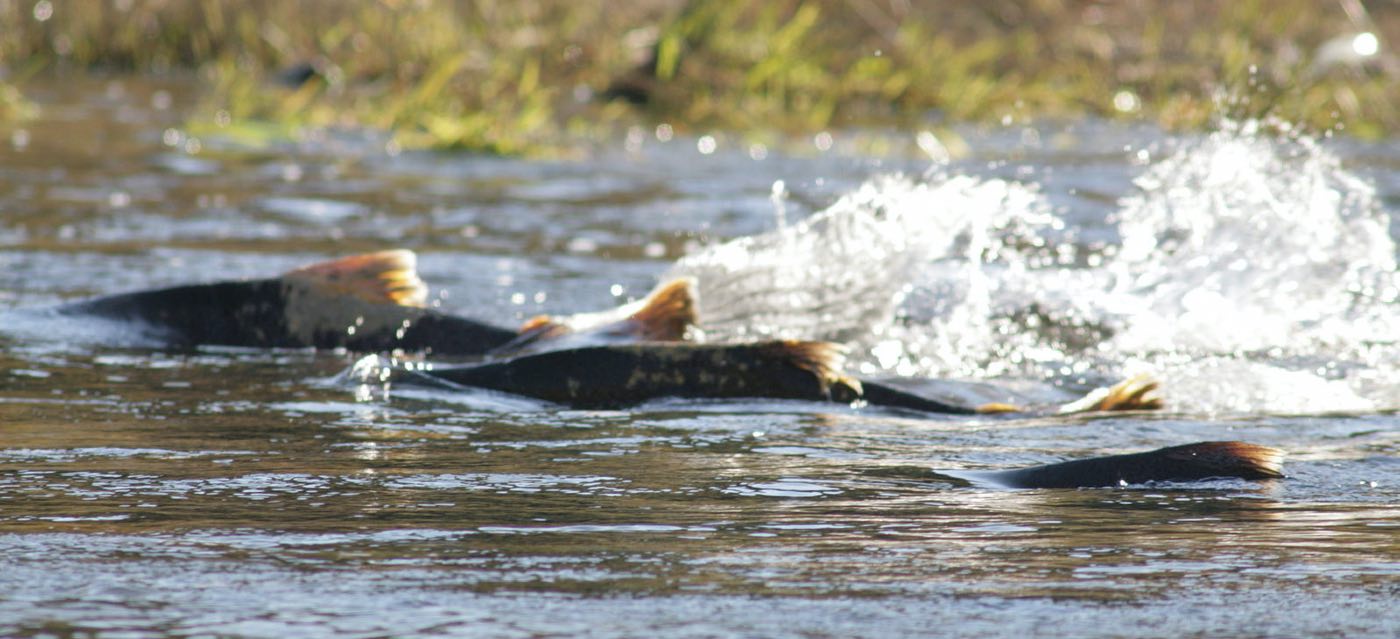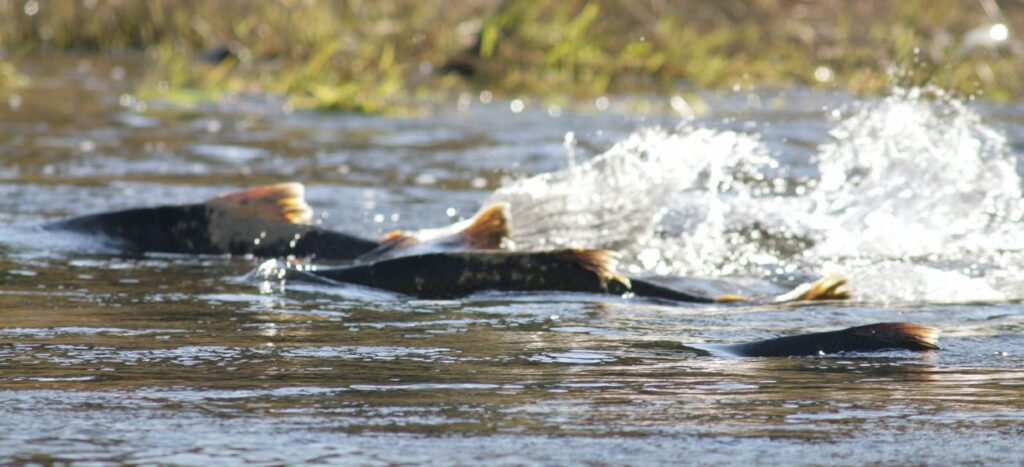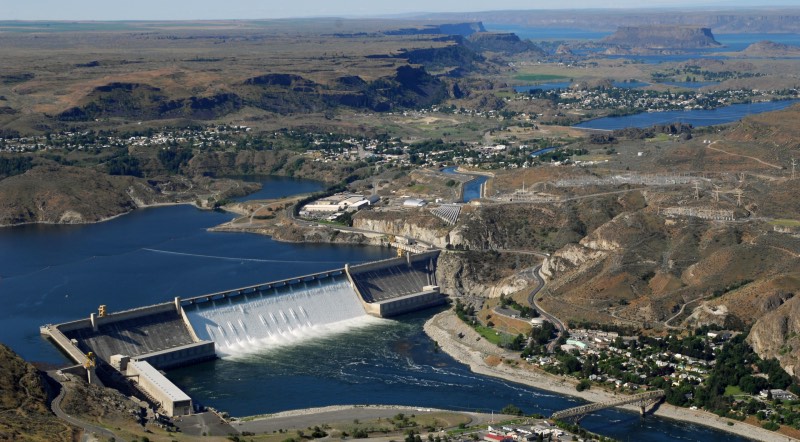
More good news. What is surely coming though is a salmon pump that lifts salmon up over those dams. It uses a pipe and compressed air which blows water up over the dam through the pipe. It will also be no trick to create a holding pond at the mouth of the pipe which has water flowing down to attract the salmon. Then perhaps once a day run the compressor to suck in the salmon up and over the dam.
The big change here is that the natives are now owning the problem and forward thinking. This starts the whole restoration cycle.
Ultimately the whole salmon ecosystem will be restored in the Pacific Northwest. We have seen the bottom and the rdecovery is on a tear now.
.
Salmon Spawning for the First Time in 80 Years in the Upper Columbia River
By Andy Corbley
-Jan 22, 2021
https://www.goodnewsnetwork.org/salmon-spawn-again-on-colville-tribes-sanpoil-river/
Tribal biologists have confirmed that chinook salmon are spawning in the upper-Columbia River system in Washington state for the first time in 80 years.

Dan Cook/USFWS
The discovery of 36 “redds” (where a female salmon deposits her eggs) along a prime eight-mile spawning stretch of a tributary of the Columbia called the Sanpoil River confirmed the Colville Tribe’s suspicions.
It’s the culmination of decades of dreaming, and years of work, which one can hear in the words of Crystal Conant, a Colville tribal member of the Arrow Lakes and SanPoil bands, when she spoke to Eli Francovich at Spokesman.
“I was shocked at first, then I was just overcome with complete joy…I don’t know that I have the right words to even explain the happiness and the healing,” she said.
The Confederated Tribes of the Colville System have been planning and researching how it would be possible to restore salmon populations to the river systems above two dams built in the 1930s and ’50s which prevented the fish from reaching the higher levels of the river system to spawn, as they had done for generations.
A long time coming (home)

Grand Coulee Dam, US Bureau of Reclamation
In blocking the salmon from returning to the upper-reaches of the Sanpoil River, many of the tribes there were prevented from carrying out fundamental practices of their culture, including the “salmon songs” which called the fish back from the ocean, and spear fishing around Kettle Falls, over which the river tumbled and roiled as it contested against quartz boulders.
The Grand Coulee and Chief Joseph dams don’t include fish ladders, and so in August the Colville Tribes released 100 salmon 35 miles upstream of the two dams in an attempt to see if they would survive and spawn.
They outfitted electronic trackers to the fish so they would be able to observe their movements. Over the summer and fall, contrary to some predictions that the fish would just up and leave, the hatchery-born salmon spread out and began to spawn.
But of course the major challenge to an otherwise superbly plausible restoration effort is whether small salmon can cross the Columbia River reservoir created by the dam, pass through the hydropower infrastructure, move out to sea, eat, grow, and return again.
As one of the most arduous and impressive migration patterns in nature, it’s difficult to survive in the best of times, but whether the human-constructed obstacles make it impossible is not known.
Their survival also depends on how many aggressive and invasive northern pike can be removed from the river and reservoir, as they would prey on the salmon species. Only after these survival concerns are alleviated will the tribes begin investigating potential costs of passageways through the dams.
According to another report from public radio, it could be 10-15 years before the tribes big-picture feasibility studies are concluded, since they would need to observe salmon coming and going while spending years out at sea.
But the wait will be worth it if the fish can return, as they are the keystone in the Colville Tribes’ culture.
“Our ancestors carried a prayer that our salmon would one day return to the Upper Columbia,” Colville Business Council chairman Rodney Cawston said in a statement. “With all the prayers that were made historically and today, combined with all the efforts of our fisheries staff, our leaders and many others who are joined in this effort, we can bring our fish home.”
No comments:
Post a Comment